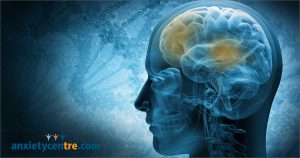Mindfulness Improves the Psychological Well-Being of Teachers in Non-Western Societies
By John M. de Castro, Ph.D.
“Teachers who practice “mindfulness” are better able to reduce their own levels of stress and prevent burnout.” – Dee DiGioia
Stress is epidemic in the western workplace with almost two thirds of workers reporting high levels of stress at work. This often produces burnout; fatigue, cynicism, emotional exhaustion, and professional inefficacy. Teachers experience burnout at high rates. Roughly a half a million teachers out of a workforce of three million, leave the profession each year and the rate is almost double in poor schools compared to affluent schools. Indeed, nearly half of new teachers leave in their first five years.
Burnout frequently results from emotional exhaustion. This exhaustion not only affects the teachers personally, but also the students, as it produces a loss of enthusiasm, empathy, and compassion. Regardless of the reasons for burnout or its immediate presenting consequences, it is a threat to schools and their students. In fact, it is a threat to the entire educational systems as it contributes to the shortage of teachers. Hence, methods of reducing stress and improving teacher psychological health needs to be studied.
Mindfulness techniques are gaining increasing attention for the treatment of the symptoms of stress and burnout. They have been demonstrated to be helpful in reducing the psychological and physiological responses to stress and for treating and preventing burnout in a number of work environments including schools. But most of the research focuses on teachers in Western societies. There is a need to study if mindfulness is equally effective in Eastern societies.
In today’s Research News article “Effectiveness and Mechanisms of Mindfulness Training for School Teachers in Difficult Times: A Randomized Controlled Trial.” (See summary below or view the full text of the study at: https://www.ncbi.nlm.nih.gov/pmc/articles/PMC8443903/ ) Tsang and colleagues recruited elementary and secondary school teachers in Hong Kong and randomly assigned them to either a wait-list or to receive 8 weekly 90-minute sessions of mindfulness training along with home practice. The mindfulness training was based upon the Mindfulness-Based Stress Reduction (MBSR) and the Mindfulness-Based Cognitive Therapy (MBCT) programs. They were measured before and after training and two months later for mindfulness, general health, insomnia, stress, positive and negative emotions, life satisfaction, emotion regulation, and mindfulness in teaching.
They found that in comparison to baseline and the wait-list group, the teachers who had received mindfulness training had significantly higher levels of mindfulness, general health, positive emotions, life satisfaction, emotion regulation, and mindfulness in teaching and significantly lower levels of insomnia, stress, and negative emotions that were maintained at the 2-month follow-up measurement. In addition, a mediation analysis demonstrated that mindfulness was associated with well-being directly and indirectly via emotion regulation such that mindfulness was associated with increased emotion regulation that was in turn associated with increased well-being. Similarly, mindfulness was associated with mindfulness in teaching directly and indirectly via well-being such that mindfulness was associated with increased well-being that was in turn associated with increased mindfulness in teaching.
The present study had a passive control condition, wait-list, and this leaves a number of potential confounding explanations of the results such as placebo effects, attentional effects, and experimenter bias. But a large amount of previous controlled research has demonstrated that mindfulness training produces increases in health, positive emotions, emotion regulation, and life satisfaction, and decreases in insomnia, stress, and negative emotions. So, the present benefits are likely due to the mindfulness training.
The findings are important as they demonstrate that teachers in an Eastern society were benefited by mindfulness training to the same extent and in the same ways as teachers in Western societies. Thus, the effects of mindfulness training appear to be universal, regardless of culture. The findings also demonstrate that mindfulness training has direct and indirect effects on well-being that similarly effects mindfulness in teaching. All of this suggests that mindfulness training improves the psychological well-being of teachers which likely makes them happier and more effective teachers.
So, mindfulness improves the psychological well-being of teachers in non-western societies
“Through yoga, mindfulness and social-emotional learning exercises, educators . . . learned strategies to help reduce stress, prioritize self-care, cultivate resilience and enhance their well-being.” – Wendy McMahon
CMCS – Center for Mindfulness and Contemplative Studies
This and other Contemplative Studies posts are also available on Google+ https://plus.google.com/106784388191201299496/posts and on Twitter @MindfulResearch
Study Summary
Tsang, K., Shum, K. K., Chan, W., Li, S. X., Kwan, H. W., Su, M. R., Wong, B., & Lam, S. F. (2021). Effectiveness and Mechanisms of Mindfulness Training for School Teachers in Difficult Times: A Randomized Controlled Trial. Mindfulness, 1–12. Advance online publication. https://doi.org/10.1007/s12671-021-01750-1
Abstract
Objectives
Research in recent years has shown that mindfulness-based interventions can enhance teachers’ mental and physical health. However, the existing studies were predominantly conducted in Western, educated, industrialized, rich, and democratic (WEIRD) societies. As a randomized controlled trial in a non-WEIRD society, the present study examined the effectiveness and mechanisms of mindfulness training for Hong Kong teachers in difficult times.
Methods
Teachers from primary and secondary schools (n = 186) were randomly assigned to mindfulness training (eight-week .b Foundations) or waitlist control condition. They completed online self-report surveys on measures of well-being, emotion management, and mindfulness in teaching at baseline, post-intervention, and two-month follow-up.
Results
The intervention group reported significantly higher levels of life satisfaction, positive affect, general health, along with significantly lower levels of insomnia, stress, and negative affect than the control group at post-test and two-month follow-up. The effect sizes were medium to large (ηp2 = 0.06 to 0.14). More importantly, teachers’ baseline well-being had a significant moderating effect on the intervention effectiveness. Those with a lower baseline in well-being benefitted more than their counterparts with a higher baseline. In addition, teachers’ emotion management was found to be the mediator through which mindfulness training enhanced teachers’ well-being. Such improvement in well-being also predicted higher levels of mindfulness in teaching.
Conclusions
This study provides evidence on the efficacy of mindfulness training for teachers beyond WEIRD societies. It suggests the universality and practicality of mindfulness training in enhancing teachers’ well-being and reducing their distress in difficult times.
https://www.ncbi.nlm.nih.gov/pmc/articles/PMC8443903/









